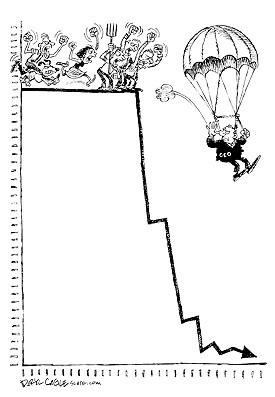Scoopful of GM News – Bankruptcy, Churning Board Members, Sales Dreams, Volt Reality, Vehicle Recall, etc..
(Source: Jalopnik, Wired, Autoblog, Detroit News)
GM chair fears deal can’t be reached: Kent Kresa, interim chairman of General Motors Corp., is not optimistic money-saving concessions can be reached with bondholders and the United Auto Workers to avoid bankruptcy before a June 1 deadline. “I’m hopeful we can get there,” Kresa told The Detroit News today. “Everybody understands we would be in a much better situation if we can resolve this among all the players without going through bankruptcy.” GM is trying to restructure about $28 billion in unsecured debt held by GM’s bondholders and $20 billion in obligations to the United Auto Workers. The federal government also may agree to swap some of its $13.4 billion in General Motors Corp. debt for new equity in the company in a move to help boost GM’s balance sheet.
GM chairman looking to turn over half of board of trustees by June? According to the Detroit Free Press, General Motors interim chairman, Kent Kresa, has been asked by president Obama’s administration to replenish the automaker’s board with fresh blood. Kresa said that while the board did achieve “historic things” recently, like renegotiating the UAW pay scale, he also said that the board didn’t fully comprehend the magnitude of the downturn.

GM Says Volt Won’t ‘Pay the Rent’ : General Motors won’t make money on its electric car for quite awhile. That’s to be expected, and it should be supported. The Obama administration doesn’t understand that.
GM, Task Force preparing for “surgical” bankruptcy: According to a lengthy report by the New York Times, the Treasury Department is directing General Motors to begin work on a bankruptcy filing by June 1. Based on sources close to the talks who were unable to officially discuss the process, the report outlines the “fast ‘surgical’ bankruptcy” of the automaker if GM is unable to reach an agreeme…
GM‘s new offer for bondholders may contain no cash, just equity: …GM, Earnings/FinancialsGM’s most recent offer to its bondholders offered a little bit of cash and a little bit of equity. GM CEO Fritz Henderson’s example was that a holder of $1,000 in bonds would end up with $333 and a some equity. After conferring with the Auto Task Force, however, that offer was deemed excessive in light of GM‘s situation so…










 Not surprisingly, officials from the Canadian and Ontario governments have followed the
Not surprisingly, officials from the Canadian and Ontario governments have followed the 

 OnStar may soon partner with Twitter to offer hands-free tweeting capability to its suite of voice-activated communications services. This may be the perfect compliment to OnStar’s automatic crash reporting.
OnStar may soon partner with Twitter to offer hands-free tweeting capability to its suite of voice-activated communications services. This may be the perfect compliment to OnStar’s automatic crash reporting.